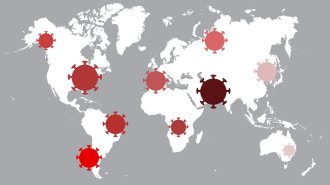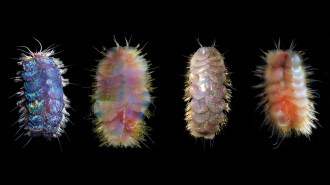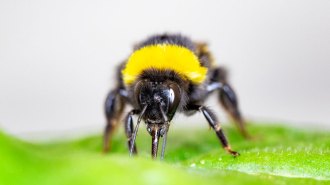Uncategorized
-
 Climate
ClimateHow more powerful Pacific cyclones may be fueling global warming
Increasingly strong storms in the North Pacific may be speeding up the fast-moving Kuroshio Current — which could bring more heat to high latitudes.
-
 Health & Medicine
Health & MedicineWastewater could provide up to a week of warning for a COVID-19 spike
A new study adds to evidence that sewage may serve as an early warning signal that the coronavirus has hit a community.
-
 Space
SpaceSpaceX’s astronaut launch marks a milestone for commercial spaceflight
Two NASA astronauts aboard the privately built Crew Dragon capsule are the first to be sent into orbit from U.S. soil since 2011.
-
 Space
SpaceHalf the universe’s ordinary matter was missing — and may have been found
Astronomers have used fast radio bursts as cosmic weigh stations to tease out where the universe’s “missing matter” resides.
-
 Health & Medicine
Health & MedicineInfecting people with COVID-19 could speed vaccine trials. Is it worth it?
To accelerate vaccine development, some experts argue we should purposefully infect volunteers with the coronavirus. Others warn of the risks.
-
 Health & Medicine
Health & MedicineIs the coronavirus mutating? Yes. But here’s why you don’t need to panic
Some studies claim there are new strains of the coronavirus, but lab experiments are needed to see if mutations are changing how it infects cells.
-
 Physics
PhysicsA star shredded by a black hole may have spit out an extremely energetic neutrino
A star’s fatal encounter with a black hole might have produced a neutrino with oomph.
-
 Animals
AnimalsNew species of scaly, deep-sea worms named after Elvis have been found
A genetic analysis sheds new light on funky scale worms with glittery, scales reminiscent of sequins on the “The King’s” iconic jumpsuits.
-
 Neuroscience
NeuroscienceHow coronavirus stress may scramble our brains
The pandemic has made clear thinking a real struggle. But researchers say knowing how stress affects the brain can help people cope.
-
 Health & Medicine
Health & MedicinePolitics aside, hydroxychloroquine could (maybe) help fight COVID-19
Hydroxychloroquine may help prevent COVID-19, or it may not. Studies are under way to find out. Meanwhile, here’s what we know.
-
 Science & Society
Science & SocietyScientists sometimes conceal a lack of knowledge with vague words
Life, time, intelligence — plenty of terms used in science have imprecise definitions.
-
 Life
LifePollen-deprived bumblebees may speed up plant blooming by biting leaves
In a pollen shortage, some bees nick holes in tomato leaves that accelerate flowering, and pollen production, by weeks.
By Susan Milius